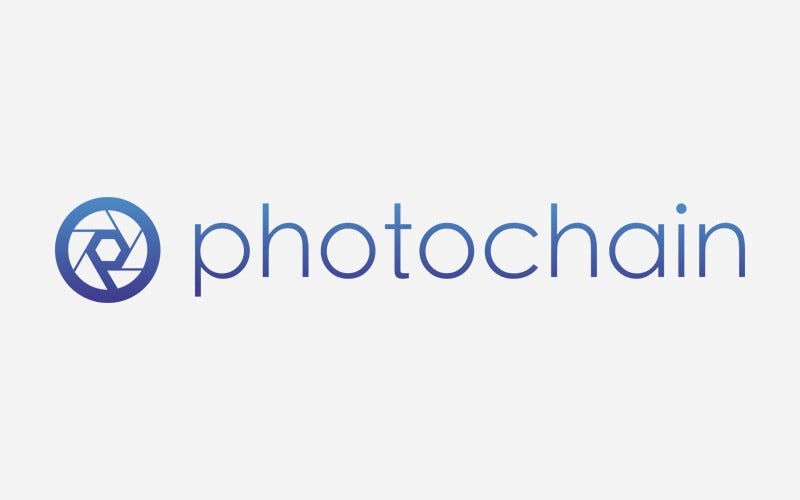PHOTOCHAIN - Blockchain Based Technology

What is Photochain
As the prices for tokens soared last year, the crypto currencies received a wave of new attention. However, instead of coming from technical enthusiasts, as you might expect, new retail investors headed the charge, trying to take advantage of the crypto momentum.
In short, cryptothermins shou
ld be technological substitutions for currency currencies, and they should be used in everyday transactions. It is assumed that Cryptocurrencies will make the transaction faster and more reliable than traditional currencies, thanks to the power of technology. While the cryptovariants themselves are very interesting, it is their basic technology that has become the focus of many others. This technology is a block chain.
Blockchain technology consists of a system of accounting books and smart contracts, which facilitates the transfer of information. An additional advantage is that these registers are decentralized (no owner), but are accessible to read and write access for all users. Since all information is cryptographically encrypted, the block can be more technologically secure than anything we had before.
As a result of its various advanced features, as well as the fact that most businesses rely heavily on data for work, blockchain technology can be applied in virtually all industries. The advantages of blockchain are almost unlimited in terms of data sharing, protection, cost savings and accountability.
One of the startups that recognized the potential of the blockchain is Photochain. This project brings blockchain technology to the market of valuable photographs - a data-oriented industry (digital photography), but controlled by very few major centralized companies.
The creators of content in this industry for many years have faced problems in the industry, in terms of licensing, ease of entry and payment. As a result, photographers find it difficult to make a good living out of their passion, often earning less than a quarter of their own sales revenue.
Prices are set by photoshots, licensing is controlled by them. In addition, verification processes for these markets are complex and often impose a large number of restrictions on their users. In the end, photographers eventually feel strangled and unsupported by the industry. Photochain believes that all these problems can be eliminated by using the power of blockchain - to create a decentralized and democratic market for valuable photographs.
How Photochain differs from traditional photobanks
According to the chief marketing manager of Photoshine, Haris Rana:
"Photochain was developed and developed completely with user account. The platform rebuilt the entire concept of the photostat from scratch, using block-chain technology at each stage of the process. This leads to an unhindered experience of buying and selling for all users, where they can feel comfortable, that their best interests are put first. "

Blockchain technology allows Photochain to cut out unnecessary centralized processing, allowing users to save 95% of the profits from their content. Protection is also available for both buyers and sellers, as the sales process is managed by intellectual contracts.
Using its innovative Digital Copyright Chain (DCC) solution, content creators can be sure that Photochain technology is looking for them. To upload a photo, the user must confirm his identity. Then each uploaded photo is permanently linked to the user who uploaded it. This link permanently exists in the block chain via DCC. This leaves a trail of ownership on every photo that passes through the platform. Each uploaded image by each photographer is compared to DCC for copyright infringement - automatically.
Uploaders can choose any price they want to list for their photos, and if they want to discuss and discuss with customers, they can do it. Providing photographers more freedom to control the fate of their own work - exactly what is in question in Photochain.
Buyers should never be known to sellers if they want to remain anonymous, but there is no risk to sellers. Smart contracts facilitate the sale process, and if the buyer agrees to purchase, the tokens are immediately deducted from their account and sent to the seller. The purchaser is provided with a digital copy of the purchased work, which is also permanently recorded in the block chain to drown out any misuse of the image.
In general, this allows Photochain to provide its users with a more flexible, fair and democratic market than in the industry. All this is emphasized in the modern prototype Photochain, which many blockchain projects do not have.

In addition to streamlining the experience for buyers and sellers in the market, Photochain creates a community. This community is built for photographers, photographers - with a long-term desire to become a decentralized autonomous organization - to be truly democratic.
As Haris says: "Photochain is the transfer of power to content developers. As amateur photographers themselves, we want to see that photography, not business, is flourishing. "
Conclusion: Photochain is a project for observation in 2018 and beyond
Photochain chose an industrial model that is obsolete and designed for decentralized destruction. Recently, the potential of the project was very noticeable, and he took the 3rd place in the ICO Pitch competition at the Leadership Summit of Blockchain in Zurich.
So the explanation from me about PHOTOCHAIN, I hope you are pleased to join us.
Thank you...
For more information:
Website: https://photochain.io/
Whitepaper: https://docs.google.com/document/d/1C4UPA9-9o2cOLJOEYMIVwN_Fi3Ebtn2YcRua58hQ7_0/edit?usp=sharing
Twitter: https://twitter.com/photochain_io
Medium: https://medium.com/@photochain
Bitcointalk: Peot
ETH: 0x4870A7b246B1C2dF4e6749ac352c8f932B21304e
Komentar
Posting Komentar